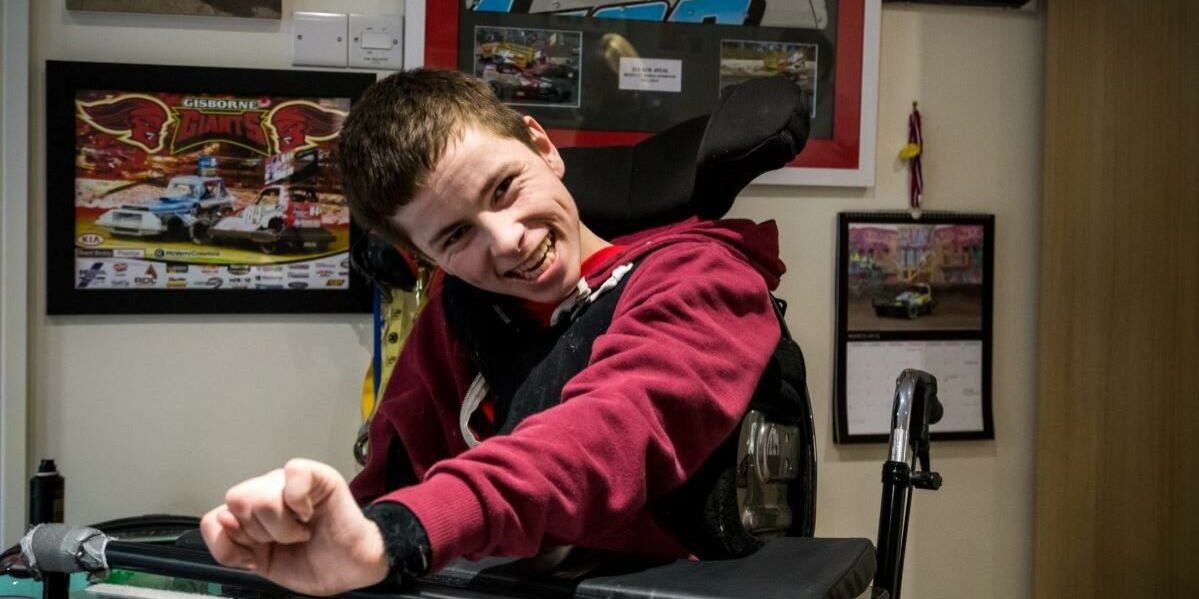What is hypoxic-ischemic encephalopathy (HIE)?
Hypoxic Ischaemic Encephalopathy, otherwise known as “HIE”, is a technical term describing brain damage caused by a lack of oxygen (hypoxia) and/or restriction of blood flow (ischaemia) to a baby which can result in neurological and developmental disorders. It is often associated with full term babies but can occur in premature babies too. There are 3 categories of HIE: mild, moderate and severe and the grade will determine the type of treatment required and the likely long-term outcome for the child.
What are the causes of HIE?
There are a number of events during pregnancy, labour and birth that can contribute to a lack of oxygen and/or blood supply to the baby. These can include umbilical cord compression or prolapse, abnormal fetal position and a lack of progression in labour, uterine hyperstimulation causing very frequent contractions, placental or uterine abruption, shoulder dystocia (where baby’s shoulders get stuck behind the mother’s pubic bone), infection, intrauterine growth restriction and placental insufficiency.
When babies in the womb don’t get enough oxygen to their brains they can compensate for a brief period of time. It is thought that a healthy baby at term can usually survive a period of around 10 minutes of acute profound hypoxia ischaemia (where blood and oxygen levels are completely cut off) before beginning to sustain brain damage. If the insult lasts longer than this, the baby is likely to be born in poor condition and go on to develop HIE. The timings may differ if the baby is vulnerable for any reason.
Sometimes the blood and oxygen supply to the baby is not completely cut off but it is reduced – this is known as chronic partial hypoxia ischaemia. This can be tolerated for a longer period before irreversible damage to the brain and other organs occurs.
The longer the period of oxygen starvation (whether acute or partial), the worse the HIE and brain damage can be and the more significant impact this may have upon the child when born.
A hypoxic event can also continue or arise following delivery during the immediate or ongoing neonatal period.
Sometimes the damage cannot be avoided given particular circumstances but it is important that a mother and baby are monitored carefully during pregnancy, labour, delivery and the neonatal period and appropriate action taken to avoid unnecessary harm wherever possible.
What are the signs and symptoms of HIE?
Signs of hypoxia prior to or at birth can include:-
- An abnormal fetal heart rate pattern. This is monitored using a cardiotocography monitor (CTG) or by intermittent auscultation;
- Meconium stained amniotic fluid;
- If resuscitation is required to help with breathing;
- The baby being born blue or white in colour and floppy or stiff in appearance;
- The baby having abnormal movements or suffering seizures shortly after birth;
- Difficulty with feeding, unable to latch, suck or swallow;
- The baby being irritable, not liking noise, touch or light;
- Having a reduced level of awareness or responsiveness or being hyper-alert.
In many cases HIE can be diagnosed very soon after birth. An assessment of the baby’s condition will be recorded at 1, 5 and 10 minutes of age. This is known as an Apgar score and may give a good indication of the baby’s condition at birth. A sample of blood taken from the umbilical cord can also show whether the baby has been subjected to a reduced oxygen supply. Cranial ultrasound scans or an MRI scan may be performed to assess the nature and extent of any brain damage.
Some damage may not immediately show on early scans and a subtle brain injury can be detected later in a child’s life through developmental screening. For some families a diagnosis is only made once the child is missing key developmental milestones and a pattern of developmental delay persists. This may lead to a diagnosis of cerebral palsy which is a motor and cognitive condition which can be caused by HIE.
Treatment
Most babies with mild HIE recover well and will be monitored closely to check that they are stable and do not require additional treatment.
If the baby has moderate to severe HIE at birth, there is a higher risk of more substantial and irreversible damage to the brain. To reduce this risk one of the most effective treatments is therapeutic hypothermia, also known as active cooling. This can reduce the risk of long-term disability and involves reducing the baby’s core body temperature for 72 hours to slow down the progression of any damage caused by the lack of oxygen. It’s important that this treatment is provided within the first 6 hours after birth to maximise the potential benefit.
Other methods of controlling the extent of damage include medication to reduce seizure activity, supporting the baby’s breathing by ventilation or other oxygen supply as well as stabilising blood sugars and the baby’s fluid input and output.
Long-term Impact
Some babies make a good recovery, others may develop difficulties or conditions associated with HIE. This can include cerebral palsy, learning difficulties, epilepsy or seizures, speech and language delays, emotional and behavioural disorders, hearing and visual impairments, respiratory conditions and/or orthopaedic conditions. A diagnosis of HIE doesn’t always lead to the development of cerebral palsy or other health issues but this can often be the case.
Babies affected by HIE will have their development closely monitored particularly during their first few years of development, to assess their ability to move and hold objects (motor skills); their sight, taste, smell, hearing and touch (sensory skills); their communication and understanding (language skills) and their ability to learn, think and reason (cognitive skills). This will help to provide an understanding of how the child is developing and whether they require help and support from healthcare providers such as paediatricians, occupational therapists, speech and language therapists, physiotherapists and orthopaedics, in addition to special educational needs support, such as Portage and an Education, Health and Care Plan (EHCP).
Seeking Support
With the right input and support children with HIE and associated conditions can thrive. It is important that children who have suffered HIE get the medical, therapeutic and educational input they need from the earliest possible stage to support their learning and development. CL Medilaw work closely with charities, educators and therapists that support an early intervention approach.
There are a number of organisations that provide information, help and support for the families of children with HIE and any associated conditions, including of course, Cerebra. Other sources of support include;
- Bliss – the Special Care Baby Charity will be able to give you advice and support. Call their family support helpline on 0500 618 140 or visit their website at bliss.org.uk.
- Peeps HIE – a UK charity dedicated to supporting those affected by HIE – call their helpline on 0800 987 5422 or visit their website at https://www.peeps-hie.org/
- Scope – the main UK charity for people with cerebral palsy – call their helpline on 0808 800 3333 or visit their website at scope.org.uk.
There is also further information on our website.
Bringing a compensation claim
It may be possible to pursue a claim for damages if your child has suffered HIE and you are concerned about the care you or your child received during pregnancy, labour or delivery, or in the neonatal period.
If a child is born at term (post 37 weeks) and has had an adverse neurological outcome then it should be reported to the Healthcare Safety Investigation Branch (HSIB) for an independent investigation. There may also been an internal investigation by the hospital via a Serious Incident Investigation Report (SIIR):
If an investigation is underway or has taken place, it is important that the family obtain specialist legal advice, even if no failings in care have been initially identified to ensure the merits of a compensation claim have been appropriately considered.
Although bringing a claim cannot reverse the damage caused it can make a life-changing difference to the whole family relieving a huge financial and emotional pressure. Bringing a successful claim for compensation can help to provide the best support possible, including access to care to allow parents to have the time to be “mum” or “dad” rather than carers, access to therapies, suitable accommodation, equipment and treatment, and ensuring the child has the best opportunities to reach their full potential and enjoy as much independence as possible.
Jamie’s Story: HIE
Jamie’s parents pursued a claim for damages with our support. Jamie suffered hypoxia during his delivery as a result of delays in recognising and responding to drops in his heartrate. Jamie was born in a poor condition requiring resuscitation, and developed HIE. He sustained a brain injury as a result of the delays that could have been avoided. Jamie was successful in his claim and has been able to secure compensation to support him for the rest of his life. He now lives in adapted accommodation with his family, he enjoys his at home hydrotherapy pool, and an adapted motor home to allow him to attend his much-loved stock car racing events.
Watch our video below to find out more information about Jamie’s story or visit our website.
https://www.youtube.com/watch?v=xdOUUSvzsKs
Kay Taylor is a Partner at CL Medilaw who, along with other team members, works closely with many families with children who have an acquired brain injury or brain condition arising out of medical negligence or personal injury.
CL Medilaw are dedicated to changing the lives of their clients by making legal matters as straight forward as possible and securing early provision of support to really make a difference to the families they represent. You can contact us either by email at [email protected] or by telephone on 0345 2410 154.
Although we are grateful to receive support from a number of corporate sponsors, we do not endorse any specific organisation. If you are seeking legal advice, we encourage you to contact a number of experienced solicitors for an initial discussion before selecting a firm.









